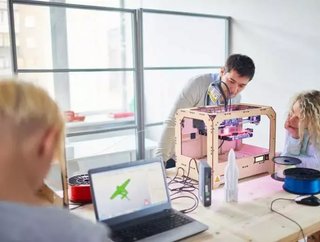Rethinking ‘Design’ for ‘Additive Manufacturing’

Additive Manufacturing (AM), used interchangeably with ‘3D Printing,’ is witnessing explosive growth and adoption. Increasing number of businesses around the world now view additive manufacturing as an essential link in their value chain. AM of metal parts and components is fast gaining prominence for its potential to disrupt traditional supply chains by reducing inventory and digitalising production. The ability to manufacture complex parts using AM is finding widespread application across industries with Aerospace, Medical and Automotive industries predicted to account for 51% of total spend on industrial AM by 2025. This brings the metal AM market to be worth an estimated $10bn by 2030.
Additive Manufacturing processes give designers the flexibility to push the limits of engineering design beyond the constraints of traditional manufacturing methods. However, AM, like any other process, works well when applied thoughtfully. We’ve shortlisted a couple of factors to consider when evaluating Designing for Additive Manufacturing (DfAM):
- Part & Design objective selection: Often assessed independently, part selection and design objective are closely linked. Parts can be evaluated based on parameters including; size and weight, production volume and lead time, surface finish requirements, functionality and criticality and traditional cost of manufacturing. Parts most suited to additive can then be shortlisted. The best suited design objectives become evident during the selection exercise e.g. weight reduction, performance improvement, lead time reduction etc.
- Availability of material. Designers need to be aware if the product material is available in powder or filament form for metal or plastic production. Most commonly used metals, such as Stainless and Maraging Steel, Aluminum, Titanium, Cobalt Chrome and Nickel based alloys are easily available. For non-metals, ABS, PLA, Nylon, Polypropylene and Polycarbonate are being offered by most machine & filament manufacturers. New materials are being progressively added to these options ensuring greater flexibility for designers.
- Solving the right problem: The Additive approach is increasingly being used in New Product Development (NPD) and in the re-design of existing parts for deriving greater value in terms of cost or performance. All parts manufactured with Additive need to perform safely and reliably in their operating environments, so it is important to have a thorough understanding of these and to look at the trade-offs between performance parameters.
See also
- Industry 4.0 and the rise of the ‘smart factory’
- Siemens Gamesa signs deal with ABP to expand turbine storage for Hornsea One
- The future of the manufacturing industry: Technology trends for 2019 and beyond
- Understanding Process Parameters: Additive Manufacturing involves a layer by layer deposition of material to build a part. The quality of the finished component and its acceptance parameters like tensile strength, porosity, dimensional integrity, microstructure etc. are sensitive to the process parameters used on the machines. At the design stage, engineers need to be cognizant of the limitations of the production environment and the direction of the build and the deviations (like warping) that are likely to occur. Ideally, the designer should also identify the critical load cases for the component so that the build can be planned to ensure highest structural integrity in the direction of critical loads.
- Post Processing, Testing & Qualification: In most cases, parts produced with Additive Manufacturing would require post processing. These activities may involve support removal, cleaning, machining to desired tolerances and heat treatment. To avoid using the support structure when printing circular channels, the designer can modify the shape of circular holes to a tear-drop shape.
Testing and Qualification also require a designer’s attention. Organizations such as ASTM, ASME and SAE are working towards establishing design and testing standards for Additive approach. For qualification, most parts that have been re-designed using AM are being qualified using the same criteria that conventionally designed parts are required to meet. However, process standardisation for each make and model of additive machines remains a challenge.
- Hiring for Additive: The biggest challenge in re-thinking design for Additive Manufacturing is hiring. Designing for additive often requires breaking the mould of conventional design, bringing the functionality of the component into sharp focus and an ability to work in a rapidly evolving technical domain. This means that creative flare, innovative thinking and innate curiosity become some of the most essential traits required in a potential hire.
To conclude, Additive Manufacturing is rapidly becoming a tool of choice for businesses and it is finding a variety of use cases across several industries. Designing for Additive Manufacturing is a much sought-after skill set in engineers. The subject is already a part of curriculum in leading research universities across the globe. Partnerships in various forms can help advance the field further along its journey.
No doubt though, this journey would be anything but conventional!
- Markforged Among Firms Embracing Distributed ManufacturingDigital Factory
- Replique, the secure 3D printing platform for manufacturersProcurement & Supply Chain
- EOS is leading sustainable manufacturing with 3D printingSustainability & ESG
- Next level 3D-Printing developed by the University of TokyoTechnology






